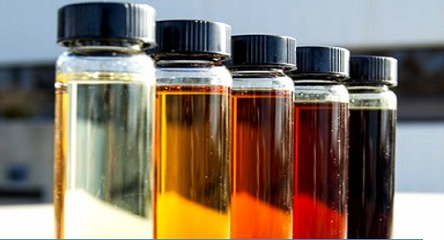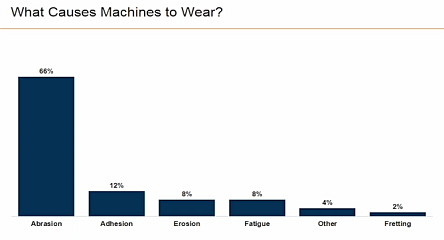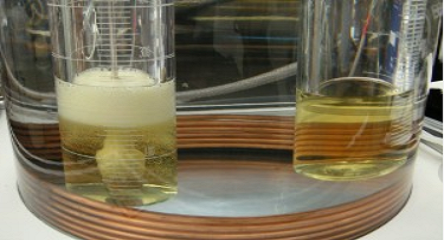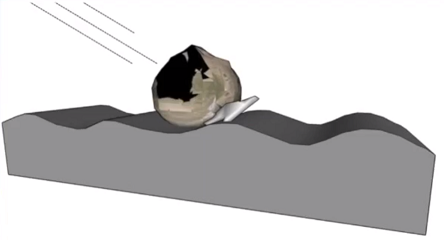Lubricating oil in gas turbines and hydraulic systems is unfortunately subject to the ravages of varnish. It is well-documented that varnish is an insoluble contaminant comprised of oil degradation by-products and sometimes depleted additive molecules. It is generally caused by some type of thermal (heat-related) stress placed on the oil. The debilitating effects of varnish include the loss of operating clearances within machinery and a loss of heat transfer due to thermal insulating. As more operators face the prospect of varnish in their lube oil systems, they are turning to oil analysis labs for answers.
Varnish: The Elusive Enigma
Whether tending to a gas turbine or a large hydraulic system, the mere mention of varnish can cause alarm and an immediate call to action.
“It’s very important that a gas turbine and the hydraulic system work every time you start up or make changes. The cost of not starting up when required, or causing shutdowns, can cost in the thousands,” says Raymond R. (Bob) Nichol, Predictive Specialist for a major US power company. “We check for varnish potential every six months and act on it if we start to see the varnish potential increase. The bottom line is by keeping the varnish potential under control, the equipment works when needed and keeps the lube oil from losing the additives, amine and phenolic antioxidants.”
A number of explanations for the increasing occurrence of lube oil varnish have been postulated. Tighter filtration requirements, higher lube oil flow rates, higher operating temperatures and the switch to Group II base stocks in oil formulations have been offered as potential culprits in the decimation of lube oil systems. Varnish can often lead to unplanned outages and costly downtime, therefore, understanding and responding to varnish with remedial filtration is critical. Unfortunately, the ability to accurately measure varnish potential has remained elusive in routine testing.
Measuring Varnish Potential
A varnish potential analysis (VPA) is used to signal the development of lube oil varnish potential. This analysis combines multiple testing technologies to measure a lubricating oil’s propensity to create varnish deposits.
This analysis combines the results of the following individual tests to provide a complete picture of a lube oil’s varnishing potential.
- Membrane Patch Colorimetry (MPC): This is a laboratory method of extracting insoluble contaminants from a used oil sample, followed by spectral analysis of the separated material. The process of making a patch isolates and agglomerates insoluble by-products associated with varnish. The color of the membrane patch provides a guideline as to the extent of varnish potential. With MPC, a direct correlation is made between the color and intensity of the insoluble contaminants and oil degradation. The test is designed to identify soft contaminants directly associated with oil degradation. This test is considered to be highly sensitive and reliable for detecting subtle changes in insoluble levels. As part of the MPC the L, a, b color values are also documented. The L, a, b values provide additional information on the particular varnish degradation mode and offer clues about the effectiveness of filtration targeting specific varnish modes. The L value is a black to white scale. The higher the L value, the higher the concentration of black particles in the oil. Black color can be due to soot particles, which can point to micro-dieseling, spark discharge, or hot spots. The a value is a red to green scale. The higher the a value, the greater the danger of sludge-building corrosive particles or diminished extreme pressure (EP) additives. Lastly, the b value is a yellow to blue scale. The higher the b value, the more susceptible the oil is to sticky deposits.
- Particle Count: Particulate contamination is tested using two methods, optical and pore blockage. Optical particle count passes the oil through a beam of light. Anything in the oil that interrupts the beam is counted as a particle. This method will count soft (varnish) particles. Pore blockage particle count passes the oil through a calibrated mesh screen that captures only hard particulates. A significant difference in the two results may be due to the presence of water, soft contaminants, or insoluble contaminants.
- Ultra Centrifuge Test: A small amount of oil in a test tube is run for 30 minutes at 18,000 RPM in an ultra centrifuge. By subjecting the sample to significant G-forces, we are able to extract oil-degraded insoluble contaminants that are associated with varnish potential. Insoluble contaminants tend to have a higher density and will drop out during testing. The amount of the agglomerated material is compared to a rating scale to derive the UC value (1-8). This test is considered an excellent indicator of varnish potential.
- Remaining Useful Life Evaluation Routine (RULER®): The RULER test uses linear sweep voltammetry to measure hindered phenolic and aromatic amine antioxidant content. The RULER quantitatively analyzes the relative concentrations of antioxidants in new and used oils in order to monitor the depletion rates of the antioxidant protection package in the oil. Hindered phenols and aromatic amines are primary antioxidants used in many industrial oils and turbine oil applications. By measuring the depletion and available reactivity of these antioxidant compounds while conducting other routine performance tests, the service life of used lubricants can be effectively monitored.
- Acid Number: A significant increase in the acid number could be indicative of rising carboxylic acids associated with an oxidation condition. Monitoring the acid number alerts us to an increasing risk of oxidation. A rapidly rising acid number indicates antioxidant depletion.
- Karl Fischer Water: This water determination test quantifies the amount of water in the lubricant. A reagent is titrated into a measured amount of sample and reacts with the OH molecules present in the sample. Results are reported as either a water or ppm percentage (1% =10,000ppm). Increased water concentrations indicate possible condensation, coolant leaks, or process leaks around the seals.
- FTIR Spectroscopy: The FTIR Turbine Method (only in use for turbine oils for which a virgin reference is available) covers the monitoring of base stock degradation, oxidation and additive depletion in machine lubricants, hydraulic fluids and other fluid types. This test is based on trending of different parameters in various oils and fluids. For the Turbine Oil Method, thermal event acid and acid oxidation are indicators of lubricant degradation. Ester, aromatic additive and base oil aromatic provide formulation information and should correlate with new oil data. Amine antioxidants and phenolic antioxidants are oxidation inhibitors with data expressed in indexing numbers.
Fighting Back Against Varnish
Varnish potential analysis should be considered a mandatory tool for any lube system that is prone to varnish. By controlling factors that influence or promote lubricant degradation, machine reliability and availability increases. By monitoring the contaminants responsible for varnish, reliability managers and maintenance planners can implement appropriate corrective actions before costly damage occurs and unnecessary downtime is experienced.






